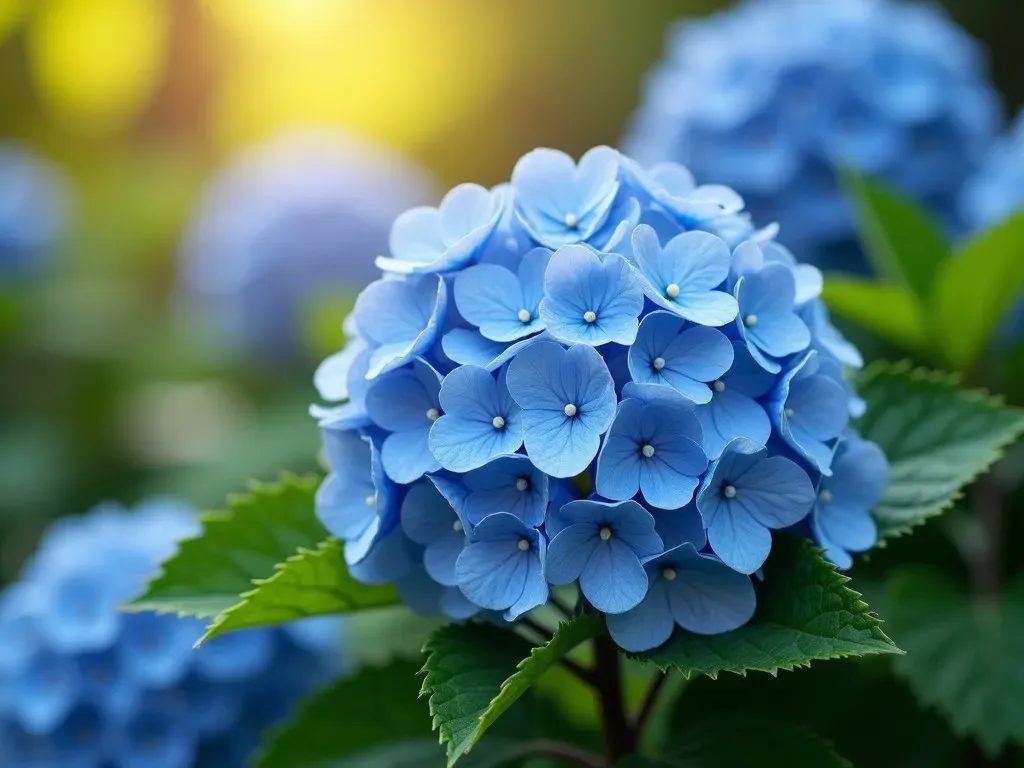hydrangea Mophead Blue is a stunning ornamental shrub known for its large, vibrant blooms. This species, scientifically classified as hydrangea macrophylla, produces rounded, pom-pom-like flower heads, captivating gardeners and floral enthusiasts alike. Characterized by their eye-catching shades of blue, these hydrangeas are often sought after for their beauty and relatively easy maintenance.
Understanding Mophead Hydrangeas
Mophead hydrangeas are among the most popular types of garden shrubs. The unique shape of their flowers has led to various nicknames, including pom-pom hydrangeas and bigleaf hydrangeas. The appeal of these flowers lies not only in their bold colors but also in their long blooming season, which typically spans from late spring to early autumn.
Characteristics of Hydrangea Mophead Blue
- Flower Color: The mophead flowers can exhibit a stunning blue hue, which significantly depends on soil pH. In acidic soils, the blooms tend to exhibit deeper blue tones, whereas, in more alkaline conditions, they may appear pink.
- Size and Shape: The flower heads are sizeable, typically measuring around 6 to 12 inches in diameter. The mophead shape provides a lush, full look that stands out in any garden.
- Foliage: The leaves are broad and dark green, providing a beautiful backdrop that enhances the vivid colors of the flowers.
- Growth Habit: Mophead hydrangeas are deciduous perennials, generally growing between 3 to 6 feet tall, depending on the variety and environmental conditions.

Growing Conditions
Mophead hydrangeas thrive in specific conditions that promote their lush growth and abundant blossoms:
| Growing Conditions | Requirements |
|---|---|
| Soil Type | Rich, well-draining soils |
| pH Level | Acidic (pH 5.5-6.5 for blue blooms) |
| Sunlight | Partial shade to full sunlight |
| Watering | Regular watering, maintaining soil moisture |
| Fertilization | Balanced fertilizer in spring |
Color Change Mechanism
The blue color of mophead hydrangeas can be manipulated by adjusting the soil pH:
- To achieve blue blooms: Lower the soil pH by adding substances such as sulfur, aluminum sulfate, or peat moss.
- To achieve pink blooms: Raise the soil pH with lime or bone meal.
Understanding this mechanism allows gardeners to experiment and create the desired color in their landscapes.
Care Tips for Hydrangea Mophead Blue
Pruning
Pruning is essential for maintaining the shape and health of the plant:
- Timing: Prune in late winter or early spring before new growth appears.
- Method: Remove dead or weak stems and cut back flowering stems to just above the first pair of healthy buds.
Watering
Regular watering is crucial for mophead hydrangeas:
- How often: Water them deeply once a week, ensuring the soil remains consistently moist but not soggy.
- Mulching: Applying mulch can help retain moisture and regulate soil temperature.
Fertilization
Proper fertilization promotes robust blooms:
- Type: Use a slow-release, balanced fertilizer in early spring.
- Frequency: Fertilize every 6 to 8 weeks during the growing season.
Popular Varieties of Mophead Hydrangeas
Several cultivars of mophead hydrangeas are highly prized for their striking beauty and unique characteristics. Here are some notable ones:
| Variety Name | Description |
|---|---|
| Blue Enchantress® | Produces large blue flowers on strong stems. Blooms throughout summer. |
| Forever ‘Blue Heaven’ | Compact variety with thick blue blooms on old and new wood. Perfect for containers. |
| Let’s Dance® Rhythmic Blue | Gorgeous blue flowers with a reblooming nature, enhancing your garden design. |
Frequently Asked Questions (FAQs)
How do I change my hydrangea’s color from pink to blue?
To change the color from pink to blue, lower the soil’s pH by incorporating acidifying amendments such as aluminum sulfate or sulfur into the soil.
Can I grow mophead hydrangeas in containers?
Yes, mophead hydrangeas can be grown successfully in containers. Ensure the pot has good drainage and use a quality potting mix enriched with organic matter.
When do mophead hydrangeas bloom?
Mophead hydrangeas typically bloom from June to September, providing vibrant colors during the peak summer months.
How do I propagate mophead hydrangeas?
Mophead hydrangeas can be propagated through softwood cuttings taken in late spring or early summer. Ensure you use a rooting hormone and provide a humid environment.
Are mophead hydrangeas susceptible to pests or diseases?
Yes, they can be affected by pests such as aphids or diseases like powdery mildew. Regular monitoring and appropriate treatments can help mitigate these issues.

Conclusion
The Hydrangea Mophead Blue is a delightful addition to any garden, transforming outdoor spaces with its luxurious blooms and rich hues. By understanding its growing requirements and care strategies, gardeners can enjoy a flourishing hydrangea bush that brings joy each growing season.
For further reading and comprehensive guidance on mophead hydrangeas, you can visit Gardening Know How for expert tips and support.



